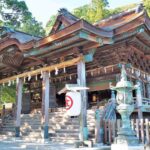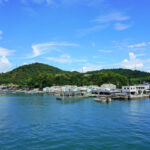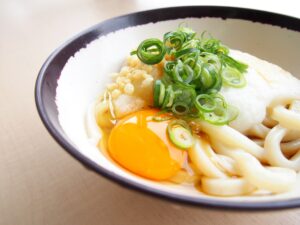
Located in Kagawa Prefecture on Japan’s smallest main island, Shikoku,
Sanuki Udon (讃岐うどん) is more than just a noodle dish — it’s a cultural icon and a way of life.
With its firm, chewy texture, simple ingredients, and heartwarming flavor, Sanuki Udon has earned Kagawa the nickname “Udon Prefecture.”
Visitors from all over Japan — and the world — come here to taste, learn, and even make udon by hand.
Contents
A Taste Rooted in History
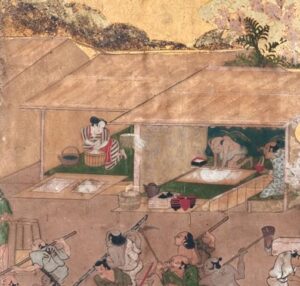
Sanuki Udon’s origins date back more than 1,000 years, when a Buddhist monk named Kūkai (Kōbō Daishi) brought noodle-making techniques from China to his homeland in Shikoku.
Over time, these noodles evolved into a uniquely Japanese dish, shaped by Kagawa’s dry climate, abundant wheat production, and high-quality salt from the Seto Inland Sea.
During the Edo period (1603–1868), udon became a daily staple for the locals of Sanuki Province (the old name for Kagawa).
Today, the region is home to over 600 udon shops, ranging from humble self-service eateries to long-established restaurants run by multiple generations.
What Makes Sanuki Udon Special
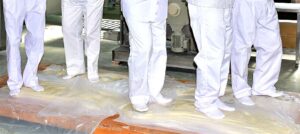
The secret of Sanuki Udon lies in its perfectly elastic noodles — smooth, glossy, and satisfyingly firm when bitten.
Traditional techniques involve treading the dough with one’s feet (called ashibumi) to achieve its signature texture, followed by hours of resting and careful cutting.
Kagawa’s natural environment also plays a vital role:
-
Locally grown wheat gives the noodles a rich, full-bodied flavor.
-
Pure spring water from Mount Iino enhances the smooth texture.
-
Salt from the Seto Inland Sea balances the taste.
Varieties of Udon to Try
Each udon shop in Kagawa has its own style, and part of the fun is discovering your favorite bowl.
-
Kake Udon (かけうどん): Served in a light soy-based broth topped with scallions and tempura flakes.
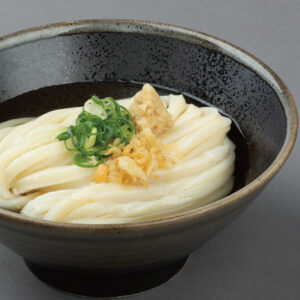
-
Bukkake Udon (ぶっかけうどん): Cold noodles with a concentrated dashi sauce poured over — refreshing and flavorful.
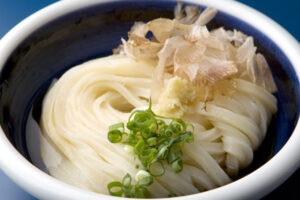
-
Kama-tama Udon (釜玉うどん): Freshly boiled noodles mixed with raw egg and soy sauce — creamy and comforting.
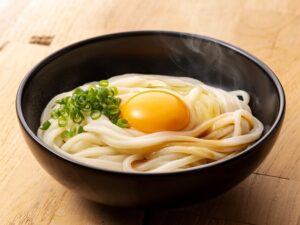
-
Kama-age Udon (釜あげうどん): Served in hot water with dipping sauce on the side — simple, traditional, and warming.
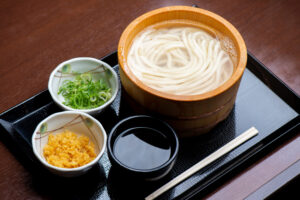
-
Tempura Udon (天ぷらうどん): Topped with crispy tempura such as shrimp or vegetables.
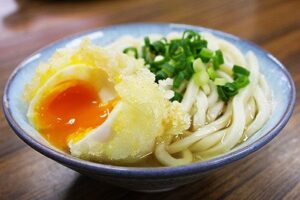
-
Shōyu Udon (しょうゆうどん): Just soy sauce and noodles — the purest form to taste the dough’s quality.
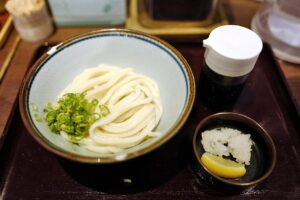
The “Udon Taxi” and Udon Pilgrimage
Kagawa has made udon exploration a unique travel exp
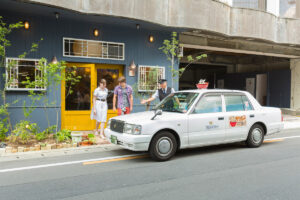
erience.
Visitors can join the “Udon Taxi” service — a special taxi driven by certified “Udon Pilgrimage Guides,” who take travelers to local udon spots off the beaten path, from family-run shops hidden in rice fields to factory-style udon makers.
Many travelers embark on an “Udon Pilgrimage,” visiting several famous shops in a single day —
sometimes called the “88 Udon Temples Tour,” inspired by Shikoku’s famous temple pilgrimage.
Hands-On Experiences
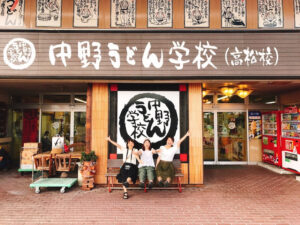
For those who want to go beyond eating, Kagawa offers interactive udon-making workshops, where visitors can learn the art of noodle creation from local masters.
-
Nakano Udon School (中野うどん学校): A popular experience where you mix, knead, tread, and cut noodles yourself — sometimes even set to music!
-
After cooking and tasting your handmade noodles, you’ll receive a certificate of completion — a perfect souvenir of your culinary adventure.
Famous Udon Shops to Visit
-
Yamagoe Udon (山越うどん): The birthplace of kama-tama udon, known for its long lines and rural charm.
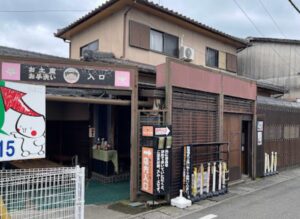
-
Nagata in Kanoka (長田 in 香の香): Famous for kama-age udon served in communal pots.
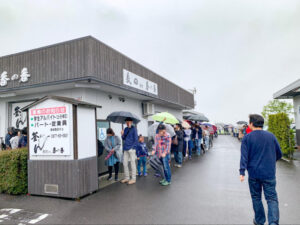
-
Okasen (おか泉): A long-established restaurant known for refined udon and crispy tempura.
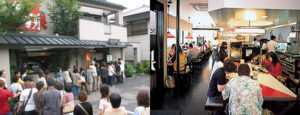
-
Marugame Udon Town: Explore Marugame City, where many of the prefecture’s oldest udon traditions began.
How to Eat Like a Local
Visiting an udon shop in Kagawa is often a self-service adventure:
-
Grab a tray and choose your bowl size.
-
Pick your noodles (hot or cold).
-
Add toppings — tempura, green onions, grated ginger, or raw egg.
-
Pay at the counter, then enjoy your udon at communal tables.
-
Return your dishes when finished — it’s all part of the experience!
It’s fast, affordable, and delicious — most bowls cost between ¥200 and ¥400, making it one of Japan’s best-value meals.
Visitor Information
-
Location: Throughout Kagawa Prefecture, with concentrations in Takamatsu, Marugame, and Kotohira.
-
Access:
-
From Takamatsu Station, many shops are within walking distance or a short drive.
-
Renting a car is highly recommended for exploring multiple locations.
-
-
Best Time to Visit: Morning to early afternoon — many famous udon shops close after lunch once the noodles sell out.
Tips for Visitors
-
Try 3–4 different shops in one day — each has its own signature broth and texture.
-
Visit a local flour mill or salt farm to learn about the ingredients behind the noodles.
-
Combine your udon journey with nearby attractions like Ritsurin Garden, Kotohira Shrine (Konpira-san), or Naoshima Art Island.
-
Some shops accept cash only, so bring small change.
-
Locals often eat udon for breakfast — early visits offer the freshest noodles.
Why You Should Visit Kagawa for Udon
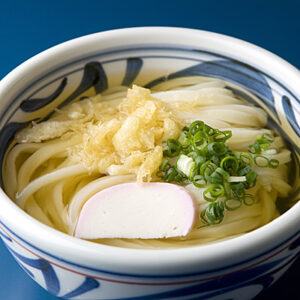
Kagawa’s Sanuki Udon is more than a meal — it’s an expression of Japanese craftsmanship, hospitality, and community.
From the rhythmic sound of dough being kneaded to the laughter of locals enjoying a quick bowl before work, udon in Kagawa captures the essence of simple perfection.
Whether you’re tasting your first kake udon or mastering your own handmade noodles,
you’ll soon understand why this humble dish has become a national treasure — and the pride of Kagawa.
Related articles
Official Website
https://shikoku-tourism.com/en/about-shikoku/Udon_making_experience
Accommodation sites
Agoda
